Connectivity, Persistent Surveillance Model Future Combat
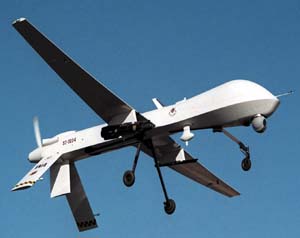 |
Large numbers of unmanned platforms, such as this Predator unmanned aerial vehicle, will provide future warfighters with around-the-clock persistent surveillance of enemy forces. By providing these systems with datalinks, the U.S. Air Force may be able to create robust mobile networks across entire theaters of operation. |
Sensors will swarm tomorrow’s battlefields, allowing warfighters nearly complete situational awareness and denying enemy forces the ability to hide or maneuver without being observed. A recent U.S. Air Force wargame identified several technologies that may revolutionize warfare by 2020. Key to these applications is the use of datalinks in all platforms to create a flexible, redundant network that stretches from infantry units on the ground to satellites in geosynchronous orbit.
Network-centric systems and capabilities are just beginning to enter widespread service with the U.S. military. However, in 15 to 20 years, commanders may take real-time situational awareness for granted as data-sharing techniques reach maturity. For this connected future to become a reality, new technologies must prove feasible, and new operational concepts must be developed to integrate them into existing force structures.
The Air Force Directorate of Strategic Planning, Washington, D.C., studied the impact of several technologies in a wargaming scenario held in January. According to the directorate’s assistant deputy director, Col. Allison Hickey, USAF, the game examined four technology concepts that could have a major effect on operations in 2020: network-centric warfare, unmanned aerial vehicles (UAVs), persistent area dominance and directed energy for weapons and communications.
For network-centric warfare, the Air Force modeled ways to integrate technologies further and provide better predictive battlespace awareness, improved information sources and enhanced datalink capabilities for automatic data processing. Col. Hickey notes that these applications not only allow more rapid target acquisition, identification and engagement, but also enhance post-strike assessment.
In addition, the advantages and disadvantages of deploying large numbers of UAVs and other unmanned platforms was explored. This assessment was necessary because each aircraft is a sensor with a data path to a decision maker, the colonel explains. But managing such a mobile network requires considerations about how imagery and data are sent. Choices exist for transmitting information to a groundstation to be processed before it is sent to a commander, or processing it aboard a platform and then sending it directly to headquarters. Another issue is determining who receives priority access to these data streams. “We looked at [UAVs] in terms of how they either enabled the network or burdened it,” she says.
Unmanned aerial platforms play a key role in persistent area dominance (PAD), the ability to maintain around-the-clock intelligence, surveillance and reconnaissance (ISR) or combat capability over a target. The game assumed the widespread use of PAD munitions that are currently under development. PAD systems have two components: a deployable warhead and a propulsion and sensor capability that remains airborne and conducts battle damage assessment (BDA). PAD weapons can be deployed from a mother ship, such as a manned aircraft or UAV, and can loiter over a target area while seeking strike opportunities. Because the sensors remain in the sky after munitions deployment, they can continue to search for other targets. “You get some real-time BDA, some effects-based eyes on the target. And you get long loiter, long persistence—in some cases, for days at a time,” Col. Hickey explains.
The final area studied was the use of directed energy across a range of lethal and nonlethal applications. Col. Hickey notes that transformational uses for directed energy include air- and space-based communications. Both the Air Force and U.S. Army are exploring the use of high-altitude airship-based relay mirrors to provide secure high-bandwidth communications.
The game revealed the critical importance of datalinks. The colonel notes that a profuse, networked environment is more efficient at transmitting vital information than is the current Internet protocol-based system. She adds that the directorate developed a model for a future distributed information system to use in the simulation.
According to Lt. Col. Ronald Marselle, USAF, deputy director of future concepts and transformation, Washington, D.C., datalinks can provide widely dispersed warfighters with the same operational picture of the battlefield. “Not only do I see the same picture, but also if I tell everybody what I see, I have a simultaneity of shared awareness that is on a grander scale than just a point-to-point datalink,” he says.
In a current or near-future combat system, point-to-point Internet protocol-based data sharing is the rule. For example, a strike package of aircraft and unmanned combat aerial vehicles (UCAVs) that chances upon an unexpected threat while inbound to a target would relay data on a point-to-point basis across the other units and back to a command and control center for mission retasking.
Col. Marselle believes that, by 2020, it will be possible to use a publish-and-subscribe capability. He explains that the first aircraft to encounter a threat could publish, or transmit, a warning to every node in the network—other platforms in the package and command and control nodes. Instead of a point-to-point system, all of the participating units are simultaneously alerted when retasking orders are issued, he notes.
Only the strike package and its command and control element use the new mission data. This feature prevents units from being overwhelmed by unnecessary information. The system operates like an e-mail address. Units receive only the immediate data they need based on their combat roles. “You don’t get everything and anything. You get what you ask for based on who you are,” he explains.
Data management was another operational concept modeled in the game. Future information systems will require a means to scan massive amounts of real-time intelligence for important fragments of data. Col. Hickey offers that it is now possible to provide real-time imagery streams from a targeting pod that can overwhelm a single human analyst. “We can build great technologies, but if we haven’t figured out how to manage what they produce for us, then we’re no better off. In fact, we might be worse off,” she says.
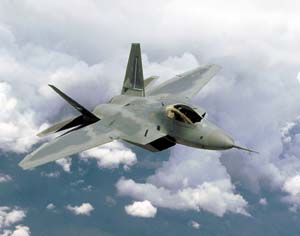 |
A variety of platforms may provide future combat intelligence, surveillance and reconnaissance (ISR) assets. For example, an F-22 Raptor could be used as a secondary ISR node by having it loiter over a target after the aircraft has released all its munitions. |
Although this fully network-enabled system gave participants almost simultaneous battlespace awareness, it also created new tactical considerations. The game revealed that keeping humans in the decision loop is vital because it may soon be possible for operations to move too quickly. High operational speed could become as much of an enemy as opposing forces if there is no strategic pause to assess a situation. One danger is that rapidly moving operations could escalate out of control. “If I start to speed up warfare, what does that mean? Are there bad things that come with speeding up warfare? Does it take away a delay I might want to have in some aspects?” Col. Hickey questions.
Air Force planners also learned how to design networks without bottlenecks or single points of failure that easily can disrupt or disable the entire system. The game designers discovered that a blend of air and space assets created redundancies that reduced the vulnerability of both groups. “You have to build robust capabilities that are flexible enough to allow you to find alternative routes for that information and data,” the colonel says.
According to Col. Hickey, future commanders will have many ISR capabilities at their disposal, allowing an enhanced view of enemy force movements. “You’ll have more eyes to watch the opposition, and you may not have to go in and do something to the enemy as long as you can watch what he is doing,” she says.
Enhanced battlespace awareness offers officers increased flexibility and decision-making capabilities as well. A fully network-enabled system also permits commanders to choose the right weapons for the right targets.
Sensor platforms will play a major role in the future. The game determined that a range of unconventional platforms can provide ISR functions. For example, if an F-22 fighter runs out of missiles and bombs but still has enough fuel to remain over the target, it can remain over the battle zone as an ISR platform and data node.
This concept applies to many platforms, from manned aircraft to UAVs and UCAVs. During the game, commanders operated manned and unmanned platforms together in ad hoc groups. This went beyond pairing a fighter aircraft and several unmanned aircraft or PAD systems. Aircraft such as gunships operated with several UAVs in tow. Col. Hickey refers to one arrangement as a “tanker with attitude”—an Air Force refueling aircraft with several escort UAVs or UCAVs.
Two separate force structures were designed for the game. The architecture permitted network-centric aspects to enhance unit flexibility and agility. This reduced the air tasking order (ATO) cycle from a 72-hour process to a plug-and-play approach that allowed commanders to create forces quickly from available units in the combat zone.
An important feature of this rapid force preparation is dynamic retasking that evaluates the need for these highly flexible purpose-built formations and assigns available units to them. For this model to work, requirements such as priority access to ISR data had to be deconflicted. Col. Hickey notes that the game planners created an especially robust network to shift operational resources rapidly. Strengthening the network consisted of equipping more remotely piloted aircraft with datalinks. “[Every aircraft] had a common datalink or better, so [they] had a way of passing information back and forth. Most of them also had the capability to subscribe,” the colonel explains.
The network designed for the game also did not have any of the trade-offs between different facets—such as space versus air platforms—that often affect such architectures. Col. Marselle states that all of the platforms worked together in a flexible network without compromising between sectors.
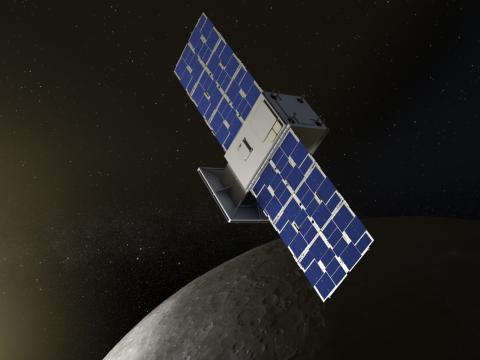
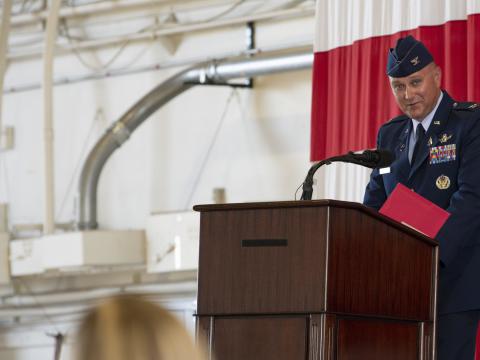

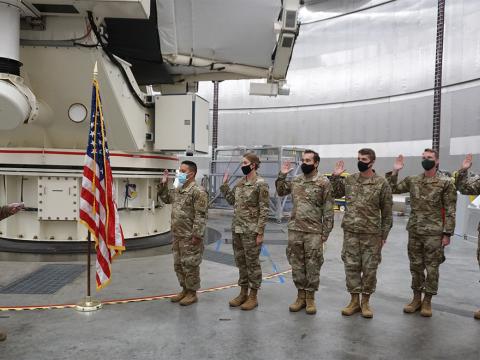
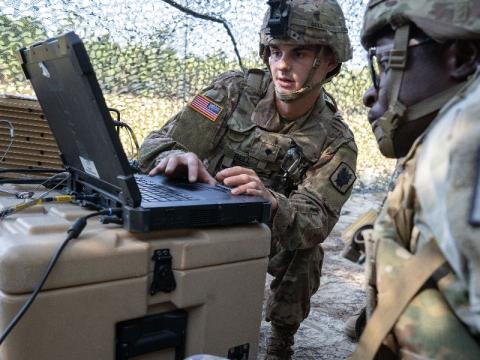
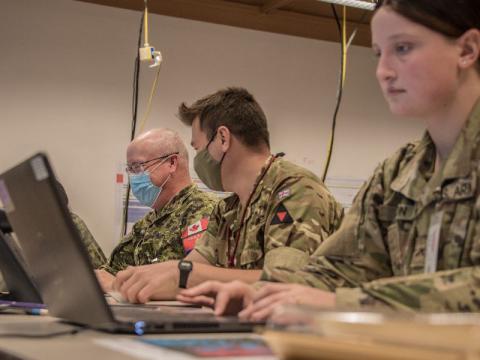
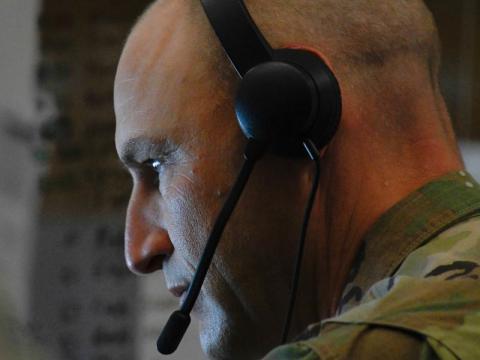
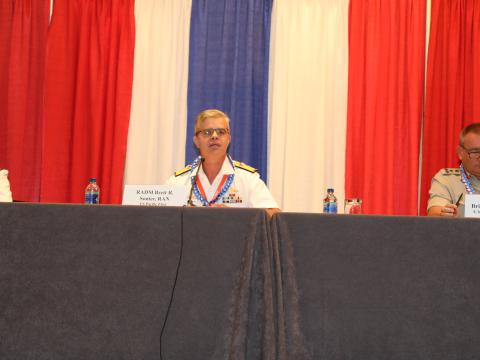

Comments